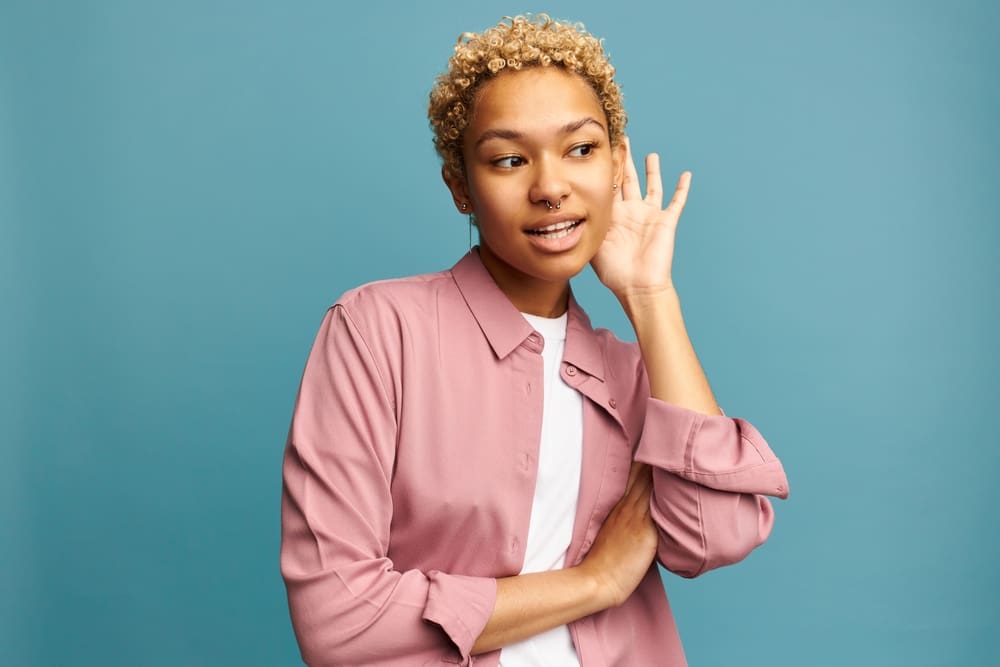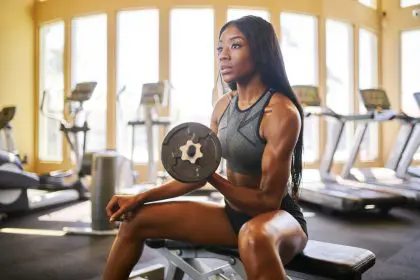Ear hair. It’s a topic that might not be the center of attention at a dinner party, but it’s a question many people have. While we often focus on removing unwanted hair, ear hair serves an important purpose. This article delves into why we grow hair in our ears and benefit from its potential.
Beyond Aesthetics: Unveiling the Two Types of Ear Hair
Not all ear hair is created equal. Two distinct types play different roles:
- Vellus hair: This is the fine, almost invisible fuzz that covers much of our bodies, including the outer ear and earlobes. It appears in childhood and regulates body temperature by providing a thin layer of insulation. Vellus hair may become more noticeable with age, but it remains delicate and isn’t a cause for concern.
- Terminal hair: This is the coarser, more visible hair that grows within the ear canal and at the base of the outer ear. We’re most familiar with this type of hair when discussing ear hair. Terminal hair tends to be thicker and more pigmented than vellus hair.
The Function of Terminal Ear Hair: A Sticky Situation with Big Benefits
Terminal ear hair works in collaboration with earwax, a sticky substance produced by glands in the ear canal. This dynamic duo acts as a defense system for our ears, offering several key benefits:
- Trapping dust and debris: Ear hair acts as a filter, trapping dust, dirt, and other small particles before they can enter the inner ear. These particles can be irritating or even damage the delicate structures responsible for hearing. Ear hair is the first line of defense, preventing it from reaching the sensitive inner ear.
- Blocking insects: Tiny insects can be attracted to the warmth and moisture in the ear canal. Ear hair helps prevent them from entering and causing irritation or infection. Imagine a fly attempting to navigate a forest of coarse hairs – ear hair creates a natural barrier that discourages such unwelcome visitors.
- Regulating moisture: Earwax helps keep the ear canal lubricated and prevent it from drying out. Ear hair helps slow down the evaporation of earwax, maintaining a healthy balance. Dryness in the ear canal can be uncomfortable and lead to irritation or even cracking of the skin. Ear hair helps maintain a moist environment that keeps the ear canal healthy.
While ear hair growth can increase with age, particularly in men, due to hormonal changes, it’s generally not necessary to remove it unless it becomes excessive or bothersome. Overzealous cleaning can disrupt the natural balance of earwax and potentially lead to ear infections. Our bodies are often remarkably self-regulating, and ear hair is no exception.
When Does Ear Hair Become a Problem? Knowing When Less is More
In some cases, ear hair can become a problem. Here are some signs to watch for:
- Excessive growth: If ear hair grows so long that it protrudes from the ear canal and becomes visible, it can be uncomfortable and trap moisture, increasing the risk of infection. Excessive ear hair can also interfere with the proper functioning of hearing aids.
- Hearing problems: Very dense ear hair can sometimes muffle sound, particularly high-frequency sounds. This can be a sign that ear hair removal might be necessary.
- Itching and irritation: Ear hair can trap moisture and debris, leading to itching and irritation in the ear canal. If you experience persistent itching or irritation in your ear, consult a doctor to rule out other potential causes.
If you experience any of these issues, it’s best to consult a doctor for advice on safe and proper ear hair removal. They can recommend techniques or tools suitable for your specific needs. There are safe and effective ways to remove excess ear hair, but it’s important to avoid using methods that could damage the ear canal or disrupt the natural production of earwax.
Caring for Your Ears: Maintaining a Healthy Balance
Here are some tips for maintaining healthy ears and keeping ear hair under control:
- Avoid cotton swabs: Cotton swabs can push earwax further into the ear canal, causing impaction. The cotton fibers can also irritate the delicate skin of the ear canal.
- Use warm water irrigation: Occasionally, irrigating your ears with warm water can help soften and dislodge excess earwax. Use a bulb syringe or gentle water pressure; never use hot water. Hot water can damage the ear canal and should be avoided.
- See a doctor for persistent problems: If you experience frequent earaches, hearing problems, or excessive earwax buildup, consult a doctor for professional cleaning and advice.
- They can also rule out underlying medical conditions: In some cases, excessive ear hair growth or earwax buildup can be a symptom of an underlying medical condition. A doctor can perform a thorough examination and recommend appropriate treatment.
Understanding the function of ear hair and practicing proper ear care can ensure your ears stay healthy and comfortable. Here are some additional tips:
- Maintain a healthy diet: A balanced diet rich in fruits, vegetables, and whole grains can promote overall ear health.
- Stay hydrated: Drinking plenty of water helps to thin earwax and prevent it from becoming thick and sticky.
- Protect your ears from loud noises: Exposure to loud noises can damage the delicate structures in the ear and contribute to hearing loss. Wear earplugs or earmuffs in noisy environments.
- Schedule regular checkups: Regular ear checkups with your doctor can help identify potential problems early on and ensure your ears remain healthy.
While ear hair might not be the most glamorous topic, it plays a valuable role in keeping our ears healthy. Understanding its function and practicing proper ear care can ensure our ears stay comfortable and function optimally for years. Remember, a tiny ear hair is a good thing – a natural defense system designed to protect our precious sense of hearing.
So next time you catch a glimpse of ear hair, appreciate its tiny but important role in your overall health and well-being.
This story was created using AI technology.















